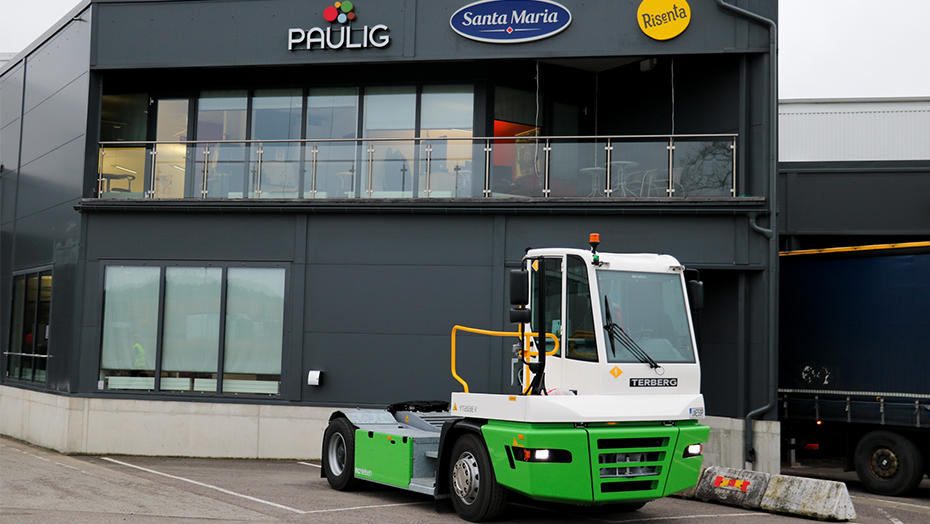
Located in Kungsbacka Paulig's distribution center supplies all of Europe with Santa Maria's spices, Tex Mex, Asian and Indian themes, BBQ products, and Street Food. With a warehouse space of 38,000 square meters and 52 employees (110 including temporary staff), they operate 50 forklift trucks, handling around 585 inbound deliveries and 770 outbound deliveries each month. The central warehouse in Kungsbacka has four docks for unloading trailers and loading goods into the warehouse, as well as nine docks for loading goods to be sent to distributors.

In 2018, Peter Eriksson, Facility Coordinator at Paulig, saw the opportunity to take the next step in the development of the distribution center and acquire a terminal tractor. The decision was based on how they defined the distribution center's role. "Do we want to use it as a warehouse or as a terminal? Since we had limited yard space, we decided to focus on the terminal. That was really the foundation for acquiring the terminal tractor from the beginning," says Peter.
Terberg's YT terminal tractors are used at warehouses, transshipment centers, and distribution centers to shunt and move trailers to and from the docks for loading and unloading. The advantages of using a terminal tractor include improved ergonomics and a better working environment for the driver, but most importantly, it is three times faster to move and unload trailers with a terminal tractor compared to a truck.
One of the significant benefits that Peter Eriksson highlights with having their own terminal tractor is the ability to control the flow and pressure at the docks. This allows them to decide when they want to empty a trailer. "We only have four docks, and when a truck arrives, the driver has to wait until we've emptied the trailer. If we have a lot to do when the truck arrives, there is a risk of queuing when more trucks arrive with their trailers. Now that we have our own terminal tractor, we can manage the flow of trailers ourselves, thereby working more efficiently and reducing pressure at the docks," explains Peter Eriksson.

From Diesel to Electric YT Terminal Tractor
In 2020, Paulig launched an ambitious sustainability strategy with the goal of reducing greenhouse gas emissions by 80% from their own operations. As part of this initiative, all trucks operating within the Kungsbacka warehouse were upgraded with sealed batteries. It also became necessary to replace the diesel-powered terminal tractor, leading Paulig to purchase a Terberg YT203-EV, an electric terminal tractor. The transition to an electric terminal tractor was primarily driven by sustainability considerations. The advantages of the electric terminal tractor are also highlighted by the driver, who finds the machine very easy to operate. "Easier than diesel. Just start and go," says driver Dennis Petersson.

Room for Development
"We can do even more," says Peter Eriksson. Currently, they handle an average of eight trailers per day with the terminal tractor. Peter Eriksson believes that there is development potential in how much and how often the machine is used, both in terms of moving containers to the raw material warehouse and working more like a terminal to move and unload more trailers at the docks themselves. "We are exploring several possibilities that I hope we can implement soon. Now we have the right conditions to handle increased capacity in yard operations, and the expertise and knowledge from N.C. Nielsen provide a solid foundation for our future collaboration," concludes Peter Eriksson.
Would you like to know more?





































